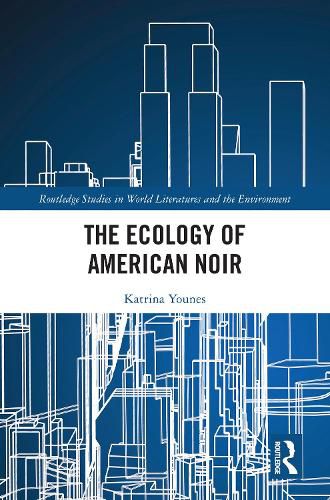Readings Newsletter
Become a Readings Member to make your shopping experience even easier.
Sign in or sign up for free!
You’re not far away from qualifying for FREE standard shipping within Australia
You’ve qualified for FREE standard shipping within Australia
The cart is loading…






This volume investigates the relationship between the conventions of noir fiction and film and its sub-types in relation to environmental crises. Dr. Younes addresses questions that not only allow readers to (re)read early hardboiled literature and neo-noir films but also help identify a new sub-genre of noir and develop an ecocritical methodology: "eco-noir." This text traces the development of strategies of mapping urban blight and environmental deterioration in classic hardboiled fiction of the 1940s, neo-noir films of the 1970s, and eco-noir texts of the post-millennial period. Introducing the concept of eco-noir as both a sub-genre and fictional form, as well as a methodology, the volume develops a new way of understanding the relationship between noir and climate fiction texts. Through a close reading of hardboiled, neo-noir, and eco-noir texts, including those by Dashiell Hammett, Raymond Chandler, Robert Towne, Kim Stanley Robinson, and Jeff VanderMeer, it asks and addresses the question: how does each sub-genre of noir map the noir atmosphere of the private investigator's natural setting in terms of environmental toxicity? The Ecology of American Noir contributes to critical conversations in both noir and ecocritical scholarship, making clear how a new understanding of noir as defined through environmental and atmospheric conditions invites readers, viewers, and scholars of the genre to generate meaningful dialogues about our decaying and deteriorating environment.
$9.00 standard shipping within Australia
FREE standard shipping within Australia for orders over $100.00
Express & International shipping calculated at checkout
This volume investigates the relationship between the conventions of noir fiction and film and its sub-types in relation to environmental crises. Dr. Younes addresses questions that not only allow readers to (re)read early hardboiled literature and neo-noir films but also help identify a new sub-genre of noir and develop an ecocritical methodology: "eco-noir." This text traces the development of strategies of mapping urban blight and environmental deterioration in classic hardboiled fiction of the 1940s, neo-noir films of the 1970s, and eco-noir texts of the post-millennial period. Introducing the concept of eco-noir as both a sub-genre and fictional form, as well as a methodology, the volume develops a new way of understanding the relationship between noir and climate fiction texts. Through a close reading of hardboiled, neo-noir, and eco-noir texts, including those by Dashiell Hammett, Raymond Chandler, Robert Towne, Kim Stanley Robinson, and Jeff VanderMeer, it asks and addresses the question: how does each sub-genre of noir map the noir atmosphere of the private investigator's natural setting in terms of environmental toxicity? The Ecology of American Noir contributes to critical conversations in both noir and ecocritical scholarship, making clear how a new understanding of noir as defined through environmental and atmospheric conditions invites readers, viewers, and scholars of the genre to generate meaningful dialogues about our decaying and deteriorating environment.